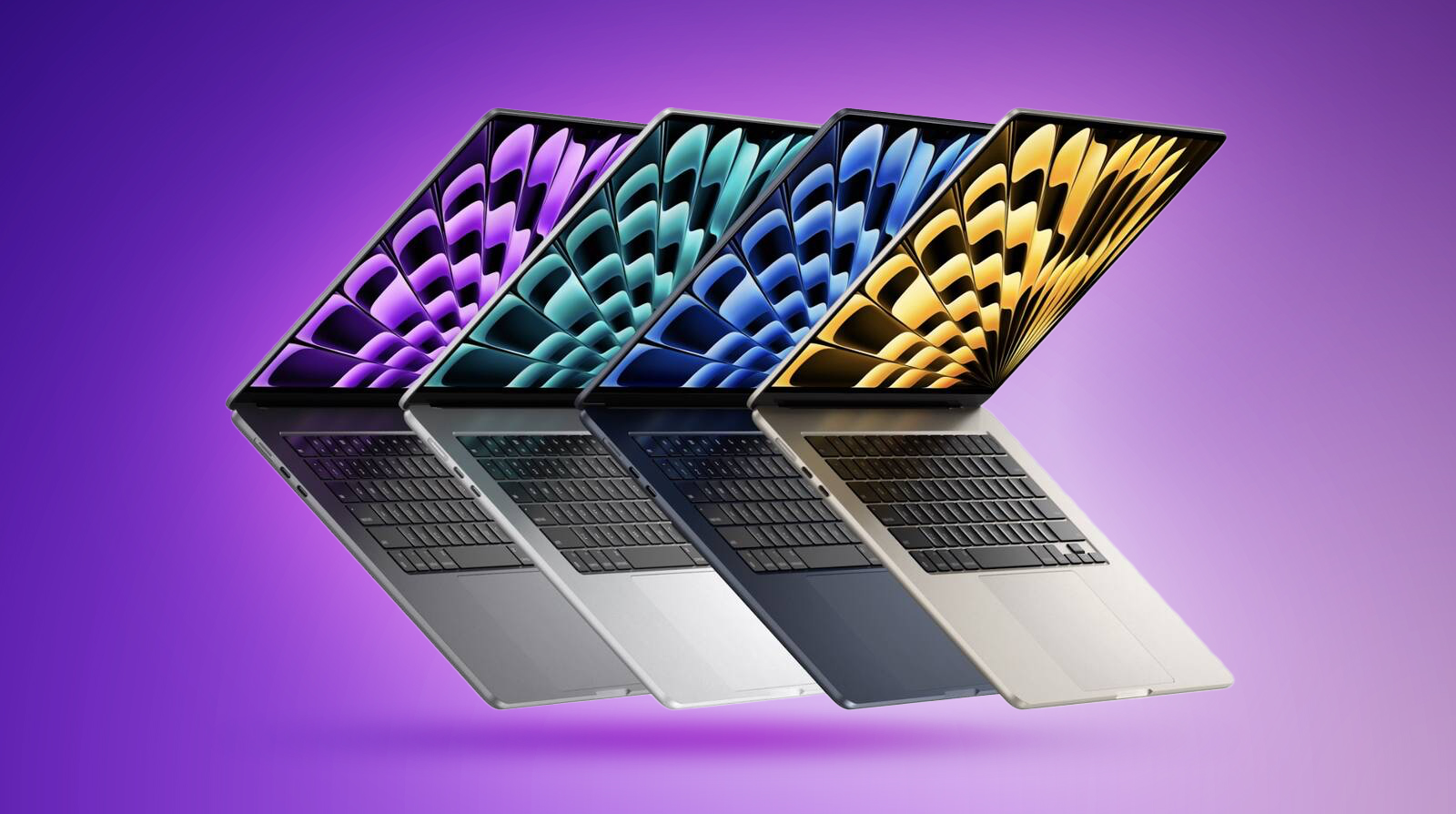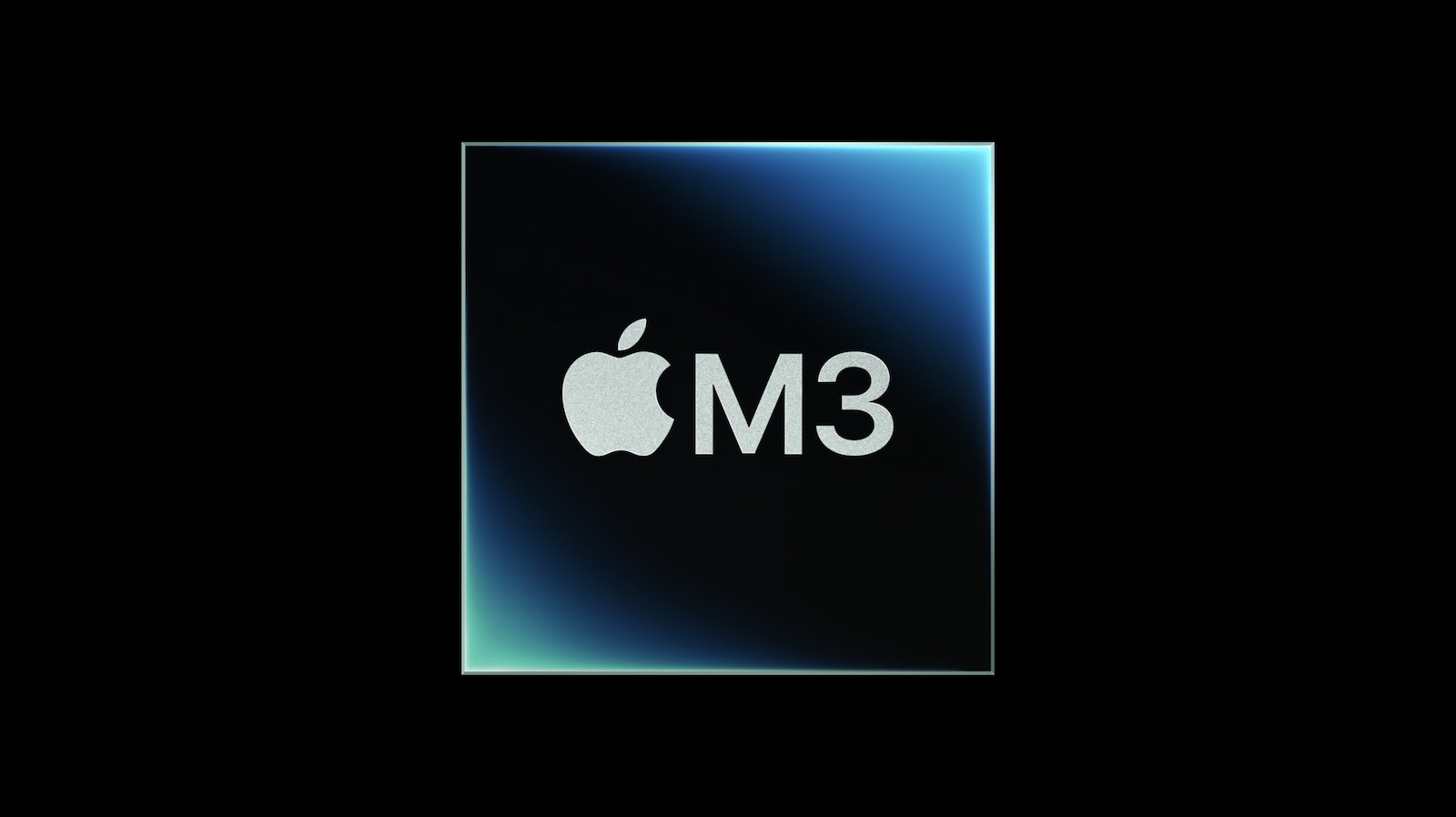Apple updated the MacBook Pro line with M3 chips late last year, but the MacBook Air has yet to be refreshed with the new hardware. That could change as soon as late March, with rumors suggesting an iPad and Mac-centric event is in the works.

We're expecting new versions of the MacBook Air, and this guide highlights everything we know about the upcoming machines.
As of last year, the MacBook Air is available in two sizes instead of one. Apple makes a 13.6-inch MacBook Air and a 15.3-inch MacBook Air, so consumers can choose between favoring portability or screen size.
Apple is going to refresh both versions of the MacBook Air. The look of the MacBook Air was last updated in June of 2022, and there are no rumors of design changes this time around. Apple will continue to use the same flat MacBook Pro-style body that was introduced in 2022, with full-size black Magic Keyboard, large Force Touch trackpad, dual USB-C ports, Touch ID, Thunderbolt charging, slim bezeled display, and aluminum chassis.

The only difference between the two models in terms of design will be the display size.
Right now, the MacBook Air is available in silver, space gray, starlight, and midnight, which is a new dark blue color. We could see the three standard colors and another special color, or a whole new color lineup.
With no design changes planned, chip updates will be the main focus of the refresh. The current MacBook Air models use the prior-generation M2 chip, with Apple planning to upgrade the machines with the M3 chip that was first introduced in the MacBook Pro.

The M3 chip is built on Apple's next-generation 3-nanometer process, which basically means that it offers better performance and power efficiency than the 5-nanometer M2. For context, there are 25 billion transistors in the M3 chip, up from 20 billion in the M2.
CPU benchmarks indicate that the M3 is approximately 17 percent faster than the M2 when it comes to single-core tasks, and 21 percent faster at multi-core tasks. GPU performance is up approximately 15 percent, but there are other GPU improvements that give the M3 chip a notable boost.
The M3 chip has a new GPU architecture that uses Dynamic Caching, which basically means that tasks use the exact amount of memory that they need and adapt in real-time for maximum utilization. The result is improved performance for GPU-intensive apps and games.
For games and 3D software, the M3 chip supports hardware-accelerated ray tracing and mesh shading. Hardware-based ray tracing is faster than software-based ray tracing, so any game or app that uses ray tracing will perform better. Complex lighting effects won't take up as many system resources, speeding up rendering times.
It is worth noting that almost all Mac games do not support ray tracing, so for gaming, this is a feature that will be useful in the future rather than immediately. For 3D tasks in apps like Blender, there will be speed improvements.
There's a new media engine in the M3 chip that supports AV1 decode. AV1 is a video codec that streaming platforms are using for higher-quality video content at a low bitrate. AV1 is becoming increasingly popular for 4K and 8K videos, and AV1 decoding is another good future proofing feature to have even for those that don't need it immediately.
The next MacBook Air models are likely to get Wi-Fi 6E support, allowing them to connect to the 6GHz Wi-Fi band offered by compatible 6GHz routers. There's a good chance battery life will be improved thanks to the upgrade to M3 chip technology.
If you have an M2 MacBook Air, it's not going to be worth updating to the M3 version because the improvements aren't notable enough. You won't see design changes, and while the M3 is better, it's not that much better.
Most people who have an M1 chip may not want to update either, but there's more to gain with the M1 to M3 upgrade both in terms of performance and in design. The M1 machines used the prior MacBook Air design, so updating to M3 gets you the sleek new look.
For those coming from an older Intel-based MacBook Air or another Intel-based machine, the M3 will be a radical improvement.
We're expecting to see new M3 MacBook Air models introduced sometime in March or April, and signs right now point toward a launch at the end of March. We don't yet have details on a potential Apple event, but we should be hearing more in the next few weeks.
This article, "Apple's 2024 M3 MacBook Air Refresh: What to Expect" first appeared on MacRumors.com
Discuss this article in our forums
Source: TechRadar

We're expecting new versions of the MacBook Air, and this guide highlights everything we know about the upcoming machines.
Size and Design
As of last year, the MacBook Air is available in two sizes instead of one. Apple makes a 13.6-inch MacBook Air and a 15.3-inch MacBook Air, so consumers can choose between favoring portability or screen size.
Apple is going to refresh both versions of the MacBook Air. The look of the MacBook Air was last updated in June of 2022, and there are no rumors of design changes this time around. Apple will continue to use the same flat MacBook Pro-style body that was introduced in 2022, with full-size black Magic Keyboard, large Force Touch trackpad, dual USB-C ports, Touch ID, Thunderbolt charging, slim bezeled display, and aluminum chassis.

The only difference between the two models in terms of design will be the display size.
Right now, the MacBook Air is available in silver, space gray, starlight, and midnight, which is a new dark blue color. We could see the three standard colors and another special color, or a whole new color lineup.
Updated M3 Chip
With no design changes planned, chip updates will be the main focus of the refresh. The current MacBook Air models use the prior-generation M2 chip, with Apple planning to upgrade the machines with the M3 chip that was first introduced in the MacBook Pro.

The M3 chip is built on Apple's next-generation 3-nanometer process, which basically means that it offers better performance and power efficiency than the 5-nanometer M2. For context, there are 25 billion transistors in the M3 chip, up from 20 billion in the M2.
CPU benchmarks indicate that the M3 is approximately 17 percent faster than the M2 when it comes to single-core tasks, and 21 percent faster at multi-core tasks. GPU performance is up approximately 15 percent, but there are other GPU improvements that give the M3 chip a notable boost.
The M3 chip has a new GPU architecture that uses Dynamic Caching, which basically means that tasks use the exact amount of memory that they need and adapt in real-time for maximum utilization. The result is improved performance for GPU-intensive apps and games.
For games and 3D software, the M3 chip supports hardware-accelerated ray tracing and mesh shading. Hardware-based ray tracing is faster than software-based ray tracing, so any game or app that uses ray tracing will perform better. Complex lighting effects won't take up as many system resources, speeding up rendering times.
It is worth noting that almost all Mac games do not support ray tracing, so for gaming, this is a feature that will be useful in the future rather than immediately. For 3D tasks in apps like Blender, there will be speed improvements.
There's a new media engine in the M3 chip that supports AV1 decode. AV1 is a video codec that streaming platforms are using for higher-quality video content at a low bitrate. AV1 is becoming increasingly popular for 4K and 8K videos, and AV1 decoding is another good future proofing feature to have even for those that don't need it immediately.
Other Upgrades
The next MacBook Air models are likely to get Wi-Fi 6E support, allowing them to connect to the 6GHz Wi-Fi band offered by compatible 6GHz routers. There's a good chance battery life will be improved thanks to the upgrade to M3 chip technology.
Worth Updating?
If you have an M2 MacBook Air, it's not going to be worth updating to the M3 version because the improvements aren't notable enough. You won't see design changes, and while the M3 is better, it's not that much better.
Most people who have an M1 chip may not want to update either, but there's more to gain with the M1 to M3 upgrade both in terms of performance and in design. The M1 machines used the prior MacBook Air design, so updating to M3 gets you the sleek new look.
For those coming from an older Intel-based MacBook Air or another Intel-based machine, the M3 will be a radical improvement.
Launch Date
We're expecting to see new M3 MacBook Air models introduced sometime in March or April, and signs right now point toward a launch at the end of March. We don't yet have details on a potential Apple event, but we should be hearing more in the next few weeks.
Related Roundup: MacBook Air
Buyer's Guide: 15" MacBook Air (Don't Buy), 13" MacBook Air (Don't Buy)
Related Forum: MacBook Air
This article, "Apple's 2024 M3 MacBook Air Refresh: What to Expect" first appeared on MacRumors.com
Discuss this article in our forums
Source: TechRadar